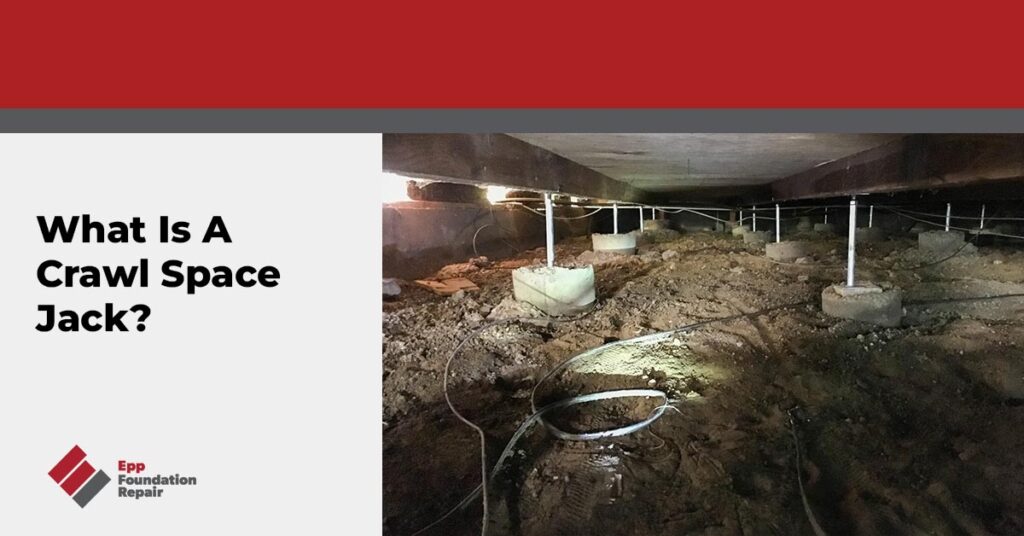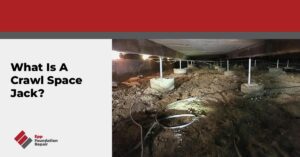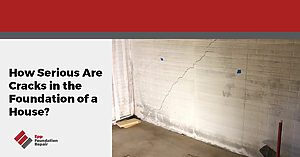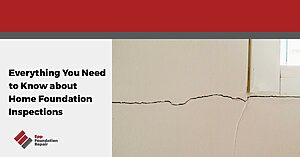Wondering what a crawl space jack is? If so, don’t hit that back button because you’ve landed on the right page. In this short article, we’re going to talk about crawl spaces, crawl space jacks, why you might need them, and more.
What Is A Crawl Space?
If you have a crawl space foundation, the crawl space is an area under the house that’s 1.5-3 feet high. It’s just big enough to crawl around in, and that’s why it’s called a crawl space.
Crawl space foundations were once very popular because they offer easy access to the home’s plumbing and electrical wiring. They’re still being built, but today, slab foundations are more popular in most parts of the country.
What Is A Crawl Space Jack?
A crawl space jack – usually more than one – is used to lift a sagging crawl space. (We’re going to talk about why crawl spaces sag in just a bit.) Crawl space jacks are adjustable and come in different sizes. People often refer to a crawl space jack as a screw jack. It’s the same thing.
How Do You Install A Crawl Space Jack?
In most cases, the existing pier blocks are in good condition. If so, the post/pier or existing crawl space jack (which may have deteriorated due to lack of corrosion protection) is replaced with a new crawl space jack. Usually, more than one crawl space jack is required to repair a sagging crawl space. After the crawl space jacks are in place, the sagging floor is lifted.
Crawl spaces jacks don’t take very long to install; if necessary, they can be adjusted later.
Why Do Crawl Spaces Sag?
Crawl spaces sag for various reasons including the following:
- The crawl space support piers have settled into the ground and are no longer vertical – This usually happens due to drainage problems. The soil becomes soft and the support piers gradually start settling. Expansive soil that swells when it soaks up water and then shrinks when it dries out can also cause the support piers to settle because it creates movement in the soil.
- The existing screw jacks have deteriorated – A crawl space jack can deteriorate if it isn’t coated with something to protect it from corrosion.
- There are an insufficient number of support piers in the crawl space – Sometimes, the builder doesn’t include enough support piers. If this happens, the floor above the crawl space could start to sag. The solution is to add additional support piers or crawl space jacks.
- Wood rot – Wooden support piers can rot for various reasons.
Signs Your Crawl Space Is Starting To Sag
Some common signs of a sagging crawl space include the following:
- Your floors are uneven or sagging.
- Your floors squeak when you walk on them.
- Your floors feel bouncy when you walk on them.
- Furniture shakes when you walk by.
- Wall cracks
- There’s mold on your first-floor baseboards or floor. This is a strong indication there’s mold in the crawl space, which means excess moisture.
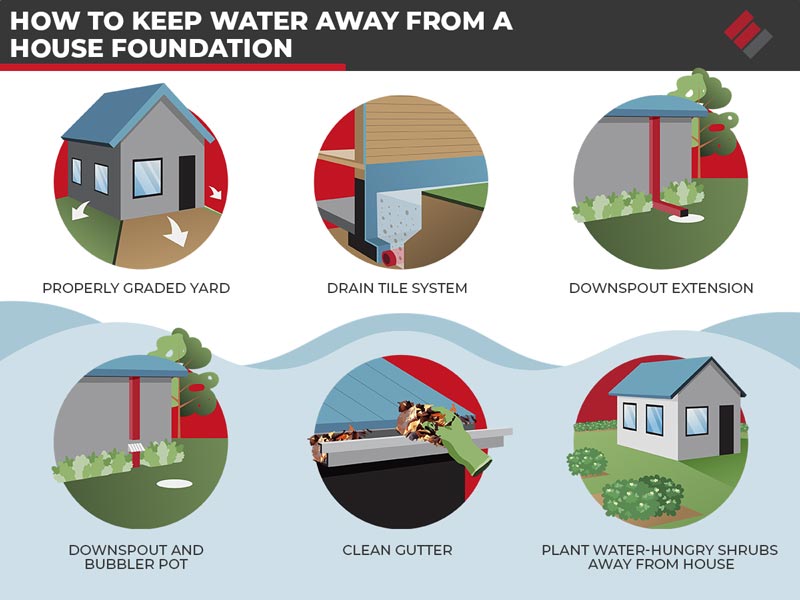
How To Prevent Trouble With Your Foundation
Believe it or not, most foundation problems are caused by excess water in the ground around the foundation. Therefore, we can go a long way toward preventing foundation trouble by making sure that groundwater is under control. Here are some ways to do that:
- If necessary, regrade the yard around your home’s foundation – The yard around your home should slope away from the foundation. If the yard slopes toward your home, water will drain toward and pool around the foundation.
- Clean your gutters regularly – If your gutters are full of dead leaves and other debris, it could cause water to spill over the sides of your home and soak into the ground around the foundation.
- Use downspout extensions – If your downspouts are too short, they’ll dump water too close to the foundation. Extensions are inexpensive, easy to install, and will carry runoff at least 4 feet away from the foundation before releasing it.
- Install an underground downspout and pop-up emitter – Runoff flows into the underground downspout and toward the pop-up emitter situated in your yard several feet from the foundation. When the pop-up emitter is empty, it sits flush with the lawn and is barely visible. When it fills with water, it pops up, releases the water away from the foundation, and then pops back down again.
- Don’t plant water-hungry vegetation next to your foundation – Flowers, shrubs, etc., may look beautiful planted next to the house. However, they need water, and that means you’ll be adding water to the soil around the foundation. This is exactly what you’re trying to avoid.
- Install a drain tile system – If you want to keep the ground around your home’s foundation dry, nothing beats a drain tile system. When it comes to foundation waterproofing, it’s a gold standard. There are two types of drain tile systems, exterior and interior. Both are easily installed in existing homes. For more information, see What Is Drain Tile?
If you think your crawl space might need at least one crawl space jack, contact us today to set up an appointment. We serve areas in four states: Nebraska, Iowa, Kansas, and Missouri.

